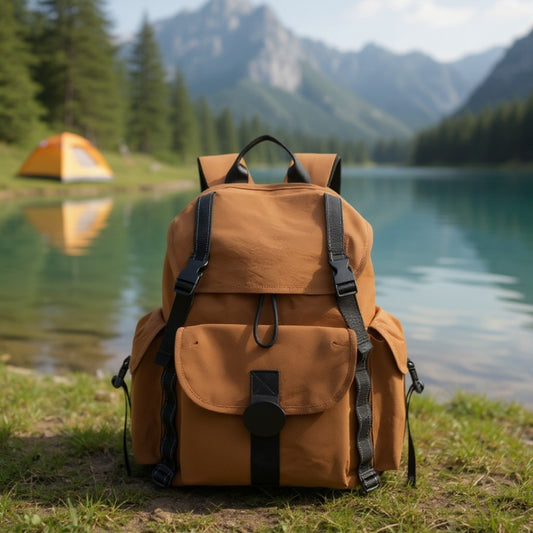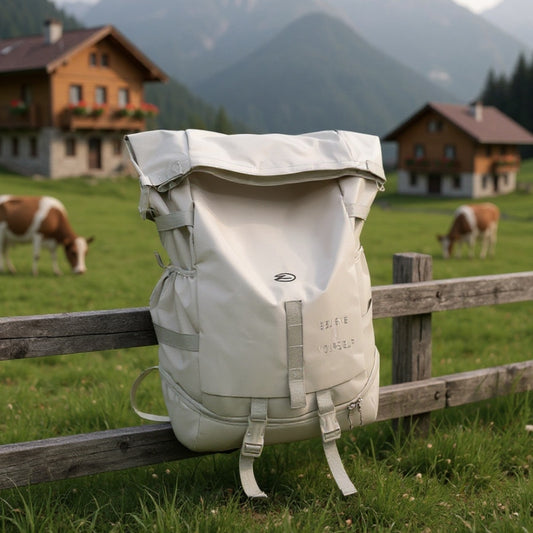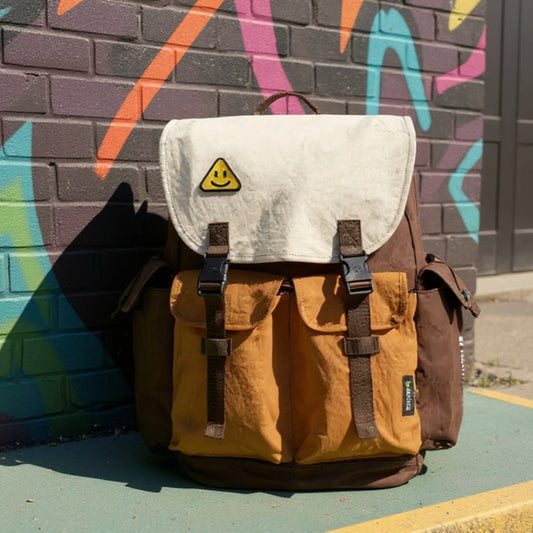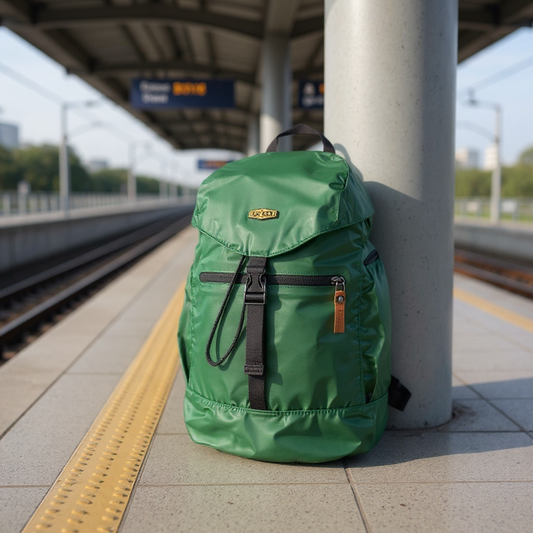Cliff Jumping for Beginners: What is Waterfall Climbing?
Share
Stood at the edge of a waterfall near Snoqualmie last August. Water was 30 feet below. Maybe more. Hard to tell when you're looking straight down and your legs won't stop shaking.
Spent 20 minutes up there trying to convince myself to jump. Watched three other people do it. Looked easy when they did it. Looked impossible when it was my turn.
Eventually jumped. Survived. Walked back up and did it again because apparently once wasn't enough to prove something to myself.
That's cliff jumping. That's what people mean when they talk about waterfall climbing—hiking to waterfalls and jumping off them into deep pools below.

What Cliff Jumping Actually Means
Cliff jumping isn't climbing waterfalls. Nobody's scaling up flowing water like Spider-Man. The name waterfall climbing is confusing.
What it actually means: hiking to waterfalls, checking if they're safe to jump from, and jumping off them. Some people call it cliff jumping. Some call it waterfall jumping. Same thing—you're launching yourself off something high into water below.
The "climbing" part refers to hiking up to the waterfalls, scrambling over rocks to reach jumping spots, and climbing back up after you jump to do it again.
Why People Try Cliff Jumping
Good question. Spent the entire hike to that waterfall asking myself the same thing.
The obvious answer for cliff jumping: adrenaline rush. Jumping off something 30 feet high gives you about 2 seconds of free fall before you hit water. That's enough time to regret your decision and feel alive at the same time.
Less obvious answer: it's something most people won't do. Standing at the edge of a cliff while your brain screams don't jump requires overriding every survival instinct you have. Most people listen to that voice. Jumping anyway feels like an accomplishment.
Also it looks good in photos. Not going to pretend that's not part of it.

My First Cliff Jumping Experience
Standing at the Edge Before Cliff Jumping
This is the hardest part of cliff jumping. The actual jump lasts 2 seconds. Standing at the edge trying to work up the nerve takes 20 minutes.
Your brain does this thing where it shows you every way you could get hurt. Hit a rock. Land wrong. Break your legs. Drown. Get paralyzed. The thoughts won't stop.
Read later that this is called High Places Phenomenon—the urge to jump even though you don't want to die. Your brain's trying to keep you safe by making you hyper-aware of the danger. Feels like it's trying to kill you.
Three people jumped before me. Made it look easy. Ran to the edge, jumped, landed fine, swam to shore, climbed back up smiling.
When it was my turn, my legs wouldn't move. Feet felt glued to the rock. Had to force myself to walk to the edge.

The Cliff Jumping Moment
Took three false starts. Walked to the edge, looked down, walked back. Did that twice. Third time I didn't let myself think.
Counted to three. Jumped before I reached three because I knew I'd back out again if I hesitated.
The fall felt longer than 2 seconds. Also felt faster than 2 seconds. Time does weird things when you're cliff jumping.
Hit the water feet first like everyone said to do. Impact knocked the air out of my lungs. Water was cold—maybe 60 degrees. Went under, came back up, swam to shore.
Whole thing was over in about 10 seconds. Twenty minutes of mental preparation for 10 seconds of activity.
After Your First Cliff Jump
Adrenaline hit hard. Hands were shaking. Heart was racing. Couldn't stop smiling.
Climbed back up to do it again. Second cliff jump was easier. Still scary, but easier. Third jump felt almost normal.
Did five jumps that day. Last one I ran to the edge and jumped without hesitating. First one took 20 minutes. Last one took 30 seconds.

How to Start Cliff Jumping Safely
Finding Safe Cliff Jumping Spots
Most cliff jumping happens at known spots where lots of people jump. These cliff jumping locations usually have:
- Deep enough water (at least 10 feet, ideally 15+)
- Clear landing zones (no rocks underwater)
- Easy ways to climb out and get back to the top
Don't just show up at a random waterfall and jump. People die doing that. Need to either go to established cliff jumping spots or check the water yourself first.
Friend of mine checks new cliff jumping spots by swimming down with a rope tied to a rock to measure depth. Also looks for obstacles underwater. Takes 30 minutes of prep before the first jump.
Cliff Jumping Safety Rules
This isn't a complete safety guide—not qualified to write that. But here's what I learned from people who do cliff jumping regularly:
Always feet first. Never dive headfirst when cliff jumping. Water from 30 feet up feels like hitting concrete if you land wrong. Diving risks hitting your head on rocks or the bottom. Feet first is the only option unless you're a professional.
Point your toes. Helps break through the water surface instead of slapping it flat during cliff jumping.
Enter straight. Body needs to be vertical when you hit. Angled entries can hurt during cliff jumping.
Jump out, not down. Need to clear any rocks at the cliff base. That means running and jumping away from the cliff, not just stepping off.
Check the depth every time. Water levels change. What was safe last week might not be safe today for cliff jumping.
Go with someone. Solo cliff jumping is how you end up as a cautionary tale.

What Happens When You Hit the Water
Hitting water from 30 feet doesn't hurt if you do it right during cliff jumping. Does it wrong and you'll know immediately.
I landed wrong on my second cliff jump—body tilted slightly sideways when I hit. Slapped the water with my shoulder and side. Left a bruise that lasted two weeks.
Water compresses your body when you hit during cliff jumping. Everything squeezes for a split second. Not painful if you land feet first and straight. Painful if you don't.
You go deep—maybe 8-10 feet underwater even from a 30-foot cliff jump. Need to swim back up. If you're not a confident swimmer, maybe reconsider cliff jumping.
Best Gear for Cliff Jumping
What to Wear for Cliff Jumping
Water shoes with grip. The rocks at cliff jumping spots are slippery. Regular shoes get waterlogged. Water shoes dry fast and give you traction.
Swimsuit. Obvious but worth mentioning for cliff jumping. Some people jump in board shorts and t-shirts. Works fine.
Life jacket if you're not a strong swimmer. Some cliff jumping spots require them. Others don't. Depends on the location.
What to Bring Cliff Jumping
Waterproof backpack for your stuff. Need somewhere to put your phone, keys, and dry clothes. Regular backpacks get soaked. Waterproof ones don't.
I use the 28L size for cliff jumping—enough room for towels, dry clothes, snacks, water, and a first aid kit. Straps stay tight while scrambling over rocks to reach cliff jumping spots.
Towel and dry clothes for after cliff jumping. You'll be cold. Pacific Northwest waterfalls are fed by snowmelt. Water's freezing even in summer.
First aid kit. Small one for cliff jumping trips. Band-aids, antiseptic, maybe some pain reliever. Hope you don't need it.
Cliff Jumping vs Waterfall Climbing
Technically the same thing. Both involve jumping off high places into water. Slight differences in context:
Cliff jumping = jumping off any cliff into water. Could be ocean cliffs, quarry cliffs, lake cliffs. Doesn't have to involve waterfalls.
Waterfall climbing = specifically hiking to waterfalls to jump off them. Always involves waterfalls, usually in forests or mountains. The "climbing" part means hiking to remote spots.
Some people use the terms interchangeably. Doesn't really matter what you call it. You're still jumping off something high into water.
Best Cliff Jumping Locations to Start
Not naming specific spots because they get crowded fast. But good cliff jumping locations to look:
Pacific Northwest has lots of cliff jumping spots. Washington hiking trails often lead to jumpable waterfalls. Oregon too.
Hawaii has dozens of cliff jumping spots. Tropical waterfalls, warm water. Way better than cold mountain water.
Anywhere with multi-day hikes through forests probably has some waterfalls worth checking for cliff jumping.
Ask locals. They'll know where people do cliff jumping. Or won't tell you because they don't want their spots to get crowded. Depends on how friendly they are.
Is Cliff Jumping Dangerous?
Yes. Obviously cliff jumping is dangerous.
Jumping off things 30+ feet high into water is inherently risky. People get hurt cliff jumping. People die. Not often, but it happens.
Common cliff jumping injuries: compressed spine from bad landings, broken bones from hitting rocks, dislocated shoulders from wrong arm position, concussions from various impacts.
Worst case scenarios with cliff jumping: paralysis from landing wrong, drowning from losing consciousness on impact, death from hitting obstacles underwater.
That said, thousands of people do cliff jumping every summer without incident. Risk level depends on:
- Height of the cliff jump (higher = more risk)
- How well you check the landing zone
- Whether you follow basic cliff jumping safety practices
- Your swimming ability
- Whether you're showing off vs. being cautious
The 30-foot waterfall I jumped from is relatively safe for cliff jumping. People jump there all summer. Never heard of anyone getting seriously hurt. But that doesn't mean it couldn't happen.
Why I Keep Cliff Jumping
Good question. The logical answer is I shouldn't.
Real answer for cliff jumping: standing at the edge of a cliff trying to convince yourself to jump is uncomfortable in a way that feels important. Most of life doesn't require you to override your survival instincts. Cliff jumping does.
Also it's fun once you get past the fear part. The 2 seconds of falling feels different from anything else during cliff jumping. Can't really describe it except you're completely present—not thinking about work or rent or anything else. Just falling.
And every time I jump without hesitating, it feels like proof I can do things that scare me. Weirdly motivating for unrelated situations.
Would I recommend cliff jumping? Depends. If you're looking for safe outdoor activities, try regular hiking instead. If you need to prove something to yourself about fear and decisions, cliff jumping might be worth trying.
Just check the depth first.




